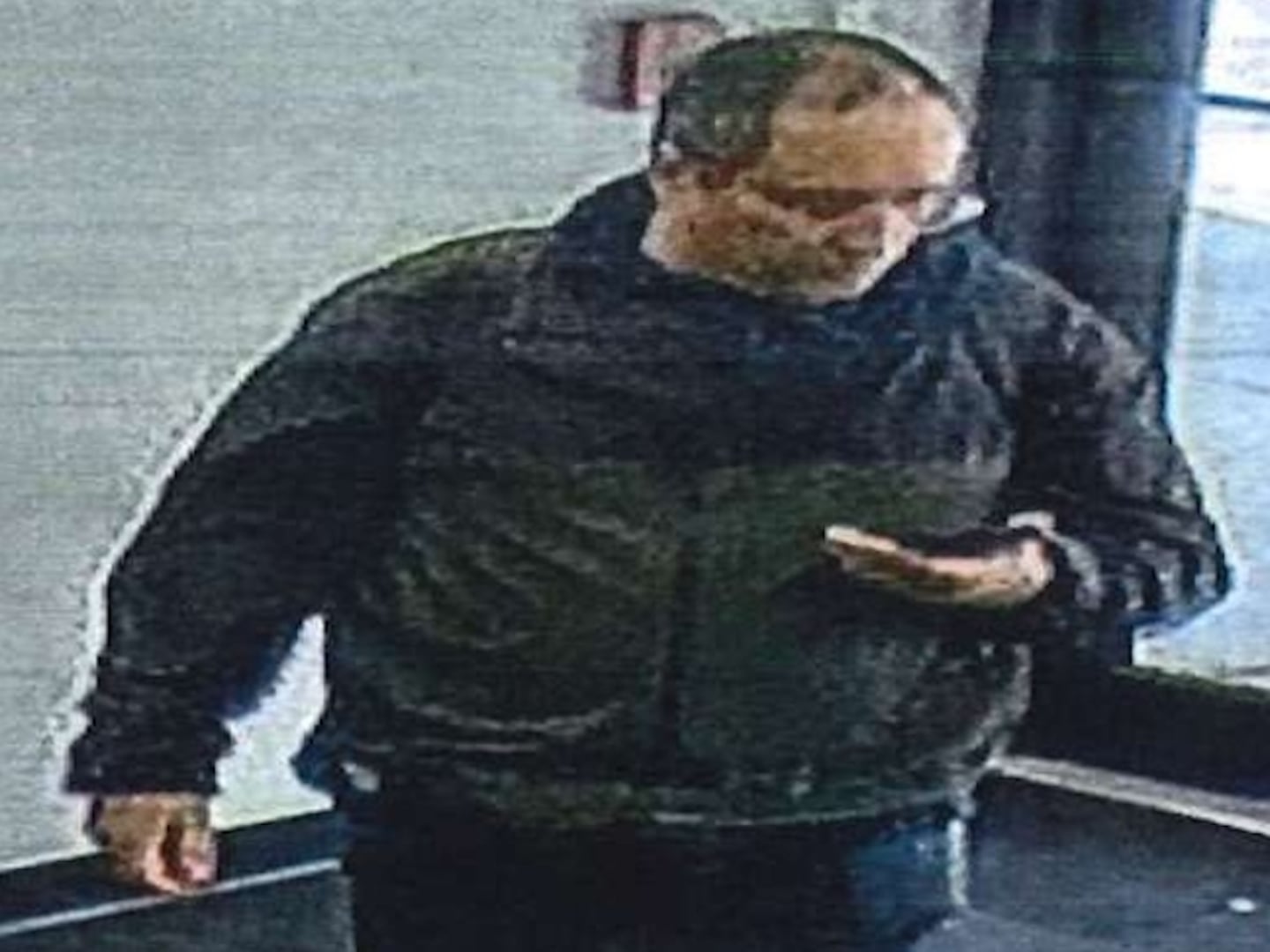
Lesson: When speaking to a Vatican official, don’t mention anything about Jesus’ genitalia.
“The holy what?” said the voice on the other end when he heard the words “holy” and “foreskin” in apparently dangerous succession.
I explained in my most earnest tone that I wanted to learn about Jesus’ foreskin, the snipped off tip of the Redeemer’s manhood, severed from the Savior on his eighth day of life, as mentioned in Luke 2:21. I wanted to tell him that up until recently the Catholic Church celebrated this bizarre but historically revered relic every January 1. And that there’s a medieval hill town near Rome that was—and, in a way, still is—the epicenter of these New Year’s Day celebrations of all things holy and foreskin.
Pope Leo XIII stated in a papal decree that anyone who wrote or spoke about Jesus’ foreskin would face excommunication.
But I didn’t get to because he hung up on me.
This was no prank call. In recent years, the Catholic Church has increasingly looked to the past for guidance. Pope John Paul II created more saints than any other pope. Pope Benedict XVI has brought back the Latin Mass. Relics of saints went on tour in the U.K. and the U.S. just last fall and attracted hordes of devotees.
Yet there’s one piece of Catholic history the church would just as soon you didn’t know about. While a large part of the world is recovering from New Year’s Eve debauchery, a tiny hill town 30 miles north of Rome called Calcata is holding its annual holy procession today, a pious parade that the Vatican has tried to suppress for over a century: the Feast Day of the Holy Circumcision.
Marked as January 1 on the General Roman Calendar, the Feast Day dates back to the Middle Ages, when preachers would hit the streets on New Year’s Day, proclaiming that Christ’s circumcision—his first bloodshed—was a foreshadowing of his ultimate sacrifice for humanity. But the church hasn’t officially celebrated the Day of the Holy Circumcision since the Second Vatican Council (Vatican II) banished it from the calendar in the 1960s.
Despite its deletion, the villagers of Calcata hold their annual procession each year. After all, they long possessed the byproduct of that surgery: the carne vera sacra, the real holy flesh, as the locals called it. Il Santissimo Prepuzio, the Holy Foreskin. The only piece of Christ’s flesh that could conceivably have been left on earth.
And so, while I was living in this Italian backwater two years ago, I couldn’t resist taking part in the procession myself. As soon as the solemn parade of parishioners shuffled out of the church, a marching band that had been waiting on the piazza belted out a slightly-off-key, upbeat tune. The village mayor, the priest, and a well-dressed middle-aged couple holding two six-inch staffs of the village’s patron saints—Cornelius and Cyprian—followed the band down the S-shaped passageway that leads out of this fortress town. I jumped into the earnest entourage and about two dozen other villagers trailed behind.
How this tiny town ended up with a sliver of Christ’s genitalia goes back, as does everything, to politics. In the Middle Ages, the foreskin was a rock star of a relic. It lured pilgrims. It generated papal indulgences. It even had the power of duplication, or so it would seem. At least a dozen towns (most of them in France) claimed to have the prized prepuce. St. Catherine of Siena, the self-proposed spiritual bride of Christ, insisted she wore his foreskin around her ring finger.
All these extra foreskins didn’t sit well with the church and its own Holy Foreskin in Rome, the same relic that was supposedly given to Pope Leo III by Charlemagne on Christmas Day 800. The church had two dilemmas on its hands when it came to the relic. One, did Christ ascend into heaven “perfect” (i.e., with his foreskin intact), as was the central question of a quiet theological argument that had been simmering for centuries? And two, how to deal with multiple copies? The former was never conclusively answered, and the latter was put to rest thanks to Reformation fury that destroyed every alleged Holy Foreskin but the one in Rome, which was sent (via a marauding German soldier who’d helped sack the Eternal City in 1527) to Calcata, where it stayed for good.
It was housed in Calcata’s church for four and a half centuries and was a source of deep civic pride for the villagers. Every January 1, the priest would lead a procession with the relic and its 18th-century reliquary. Villagers would swoon at the sight of it. Some would rush the priest and kiss the reliquary.
With all the Holy Foreskins gone and the Roman one now tucked away in an obscure town nobody cared about, the church had one less thing to worry about. But in the 19th century, the French town of Charroux, famous for its Saint Prepuce in the Middle Ages, suddenly “rediscovered” its relic. So did Coulombs, another French town. The Protestant press in Europe called the new multiple copies an embarrassment for the Catholic Church. In response, on February 3, 1900, Pope Leo XIII decided to put the matter to rest once and for all. In a papal decree, he stated that anyone who wrote or spoke about Jesus’ foreskin would face excommunication. A spokesperson for the Church later commented that there was concern the foreskin could cause “an irreverent curiosity.” The people of Calcata could still have their annual procession, but that would be the only time they’d get to see their miraculous membrane. And they’d have to do it from a distance and without commentary. The word prepuzio, foreskin, would now have to be replaced with reliquia, relic. Or better yet, cosa, thing.
The French foreskins quietly disappeared, and Calcata’s foreskin lived in relative obscurity in the isolated hills north of Rome, still celebrated with reverence every New Year’s Day by the villagers. When the village was condemned in the 1930s for fear its cliffs were crumbling and the residents eventually moved to a new village, Calcata Nuova, a half-mile away, the relic remained in the medieval village church—even after hippies and artists began gravitating there in the 1960s, setting themselves up in the recently abandoned houses that they’d bought for ridiculously low prices.
Then, in 1983, the village priest, Don Dario Magnoni inexplicably took the relic out of the church and placed it in a shoebox in his bedroom armoire in Calcata Nuova. A few months later, after spending the day in Rome, he arrived home to find his house had been broken into. He went right for the small trove of money he’d been saving in his clothes drawer. The money was still there. But when he looked in the armoire, all he saw was the empty space where the Holy Foreskin had been stashed.
A few weeks later, the New Year’s Day procession went on as planned, this time without the relic. Speculation swirled as to who stole it—Satanists, neo-Nazis, Don Dario himself—but the biggest suspect was the Vatican. Many villagers, suspicious Don Dario had something to do with the disappearance of their beloved relic, boycotted the procession that year.
Today, with the Holy Foreskin still missing and the day of the Holy Circumcision no longer part of the liturgical calendar, the procession in Calcata still moves on, only now without the passion it once had. When I took part in the New Year’s Day procession two years ago, we shuffled our way out of the medieval hill town toward the new village of Calcata Nuova. There was no one swooning, no one running up to kiss whatever Don Dario was holding. No fervor. All the more reason for Catholics to demand that the church bring back some of the pomp and circumstance that got left behind with Vatican II.
And if you call, just make sure they’re in a good mood before mentioning the words Holy Foreskin.
David Farley is the author of An Irreverent Curiosity: In Search of the Church’s Strangest Relic in Italy’s Oddest Town, about his search for the Holy Foreskin of Calcata. He also writes for The New York Times, The Washington Post, and National Geographic Traveler.






